Heart to heart with the Duchess
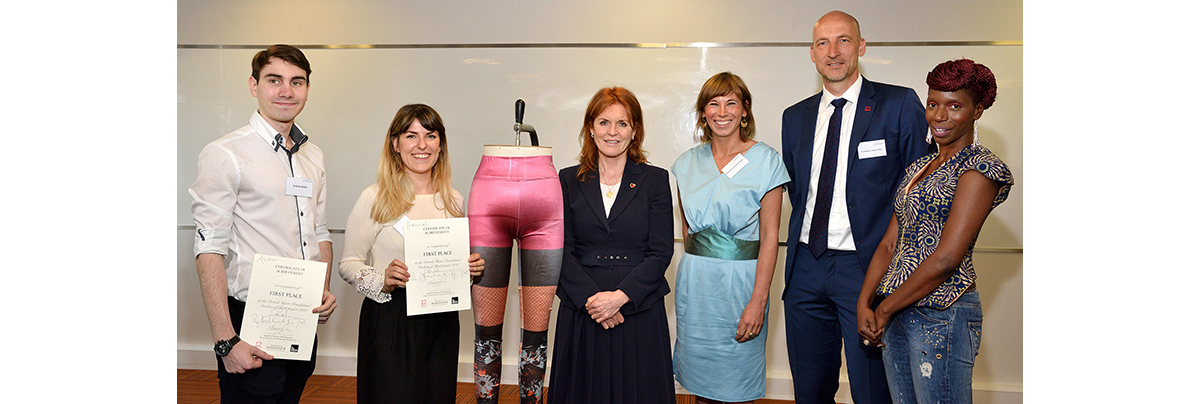 First-placed students Andrew Mullin and Hannah Russell (left) with the judging panel (l-r) the Duchess of York and representing the British Heart Foundation Kitty Buchannan-Gregory and Michelle White with coronary specialist Professor Sven Plein
First-placed students Andrew Mullin and Hannah Russell (left) with the judging panel (l-r) the Duchess of York and representing the British Heart Foundation Kitty Buchannan-Gregory and Michelle White with coronary specialist Professor Sven Plein
Fri, 16 Jun 2017 10:30:00 BST
Duchess of York judges student creations that will alert women to coronary problems, in conjunction with the British Heart Foundation
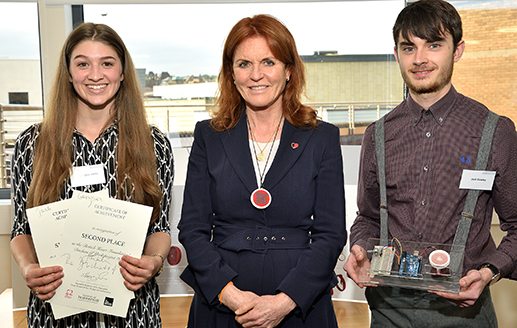 ►Second-placed students Georgina Jenks (left) and Jack Cowley with the Duchess
►Second-placed students Georgina Jenks (left) and Jack Cowley with the Duchess
INSPIRED by a design challenge from the Duchess of York, teams of talented University of Huddersfield students have developed a range of technologically-advanced wearable devices that can monitor the heart health of women and help to stave off the risk of coronary failure.
Using the latest in sensor technology, plus the potential of wireless communication, smartphone apps, modern textiles and 3D printing, the students came with ideas that include a bra that keeps track of its wearer’s heart health; a stylish bracelet that can monitor heart health; and a necklace for pregnant women, fitted with sensors that issue warning signs and can even transmit them to a GP.
The Duchess then came to the University to head a panel of judges that inspected the five designs and it chose a winner – leggings embedded with sensors that can record blood pressure and heart rate, sending data wirelessly to a smartphone.
Half of the seven million people living with heart and circulatory disease in the UK are women. When the Duchess became an ambassador for the British Heart Foundation (BHF) she was made aware of “terrifying” statistics, such as the fact that 77 women die every day from coronary illness, which is a bigger killer than breast cancer.
“I started a campaign with the BHF to alert women that when they get that pain in a supermarket it’s not just from carrying the supermarket bags. They must go and get it checked!” said the Duchess, who realised that the subject would be ideal as the basis for the latest in a series of design challenges at the University of Huddersfield, where she holds a Visiting Professorship.
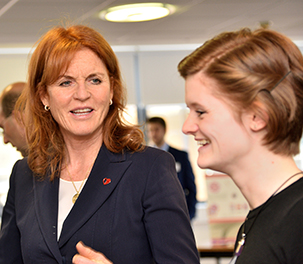 Ten students in the University’s School of Art, Design and Architecture were selected and formed into teams of two, each consisting of one textile practice student and one product design student. Most were in the second year of their degrees. They spent weeks researching coronary illness in women and then they developed a range of product ideas. After feedback from tutors and fellow students they focussed on one product, creating prototypes and explanatory material.
Ten students in the University’s School of Art, Design and Architecture were selected and formed into teams of two, each consisting of one textile practice student and one product design student. Most were in the second year of their degrees. They spent weeks researching coronary illness in women and then they developed a range of product ideas. After feedback from tutors and fellow students they focussed on one product, creating prototypes and explanatory material.
Supervising the project were senior fashion and textiles lecturer Nicola Redmore and Dr Ertu Unver, who is Principal Enterprise Fellow in 3D and Product Design.
The Duchess came to judge the results, heading a panel from the BHF, including coronary specialist Professor Sven Plein.
As winners, they chose Andrew Mullin and Hannah Russell, whose device is named Compressure. It consists of special leggings, including a waistband battery powering a monitor that records blood pressure and heart rate, sending the data to a smartphone.
In second place came Pulse, from Jack Cowley and Georgina Jenks. It is a wearable accessory equipped with a computer chip that makes it pulsate every eight minutes, representing the fact that in the UK this is how often a person dies from a heart attack. The device is intended as a talking point, spreading awareness in particular of Spontaneous Coronary Artery Dissection. It also has a QR code linked to the BHF website.
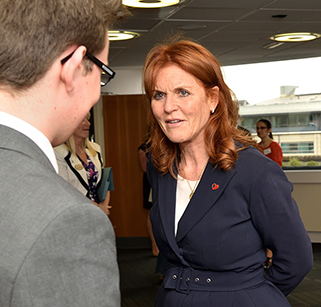 There was praise too for the other entrants:
There was praise too for the other entrants:
- Blossom, from Ellen Cracknell and James Seal, is flower-shaped necklace for pregnant women, whose hearts can be working 40 per cent harder. Its petals open up in response to warning signs, such as an alarmingly high heart rate.
- Life Bra, from Qamer Razzaq and Echoe Moyeres, is hybrid of a normal bra and a sports bra, with sensors in the under-wiring. They measure factors such as heart rate, and a BHF logo changes colour in response to warning signs, providing a visual cue. Also, data is sent to a special smartphone app.
- Beat, from Lydia Hurley and Kyran Johnston-Hunt, is brightly coloured and stylishly designed bracelet – inspired by nature – that connects to a ring sensor. Intended for monitoring people with pre-existing heart conditions, it would measure heart rate and blood pressure.
The Duchess said she was proud of her connection with the University of Huddersfield and was impressed by all the devices that she saw.
“Whenever I come here there are such high standards and technical ability. Every single device I have seen today could change a woman’s life – in fact give a woman her life.”
The Duchess’s trip also included a visit to Huddersfield’s Kirkwood Hospice, marking its 30th anniversary, and she revealed that this had furnished inspiration for her next University of Huddersfield design challenge, later in the year. This would involve the design of elements such as wallpapers and textiles to change the atmosphere and improve people’s lives.
Students with their designs
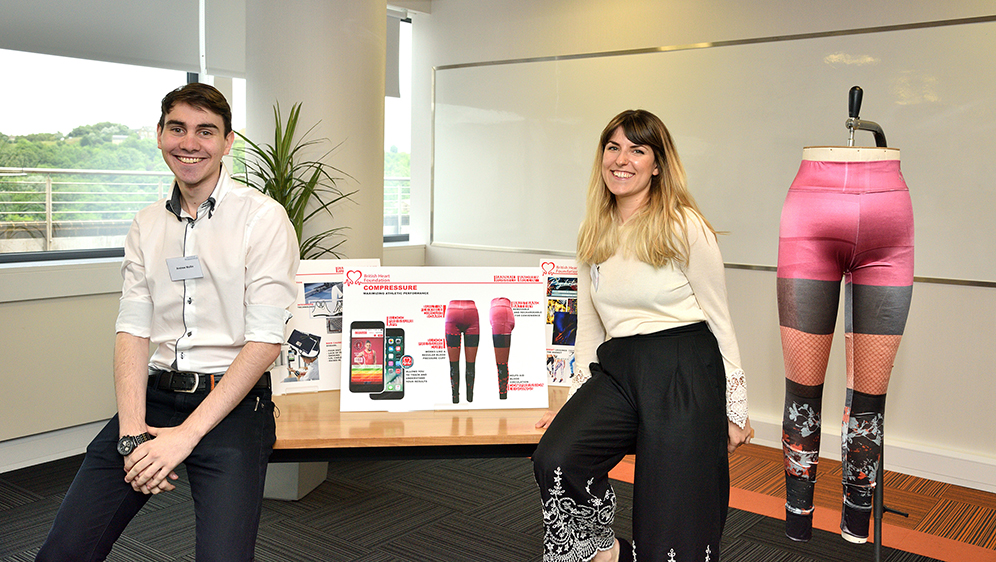
Above - Andrew Mullin and Hannah Russell with their device named Compressure
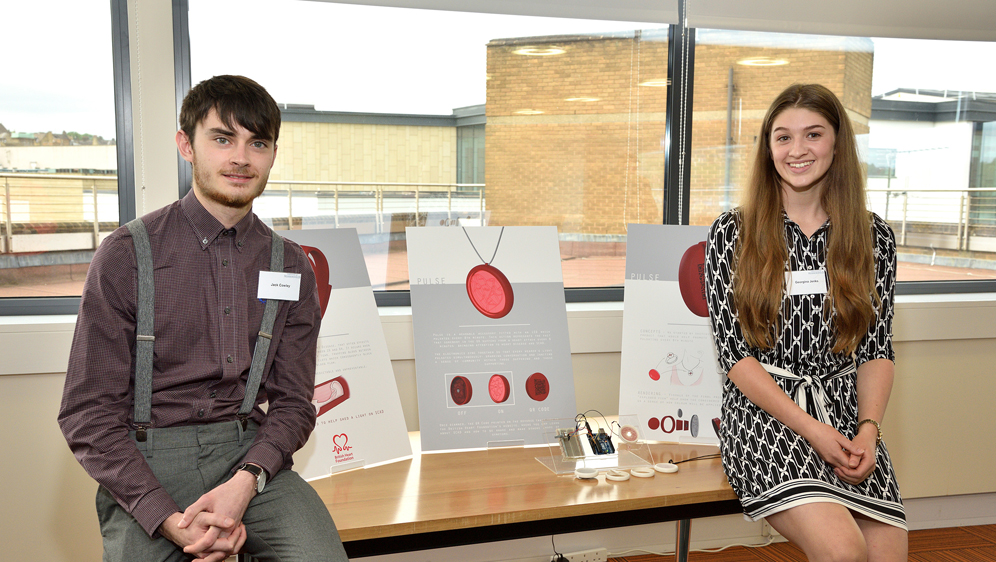
Above - Jack Cowley and Georgina Jenks with their device named Pulse
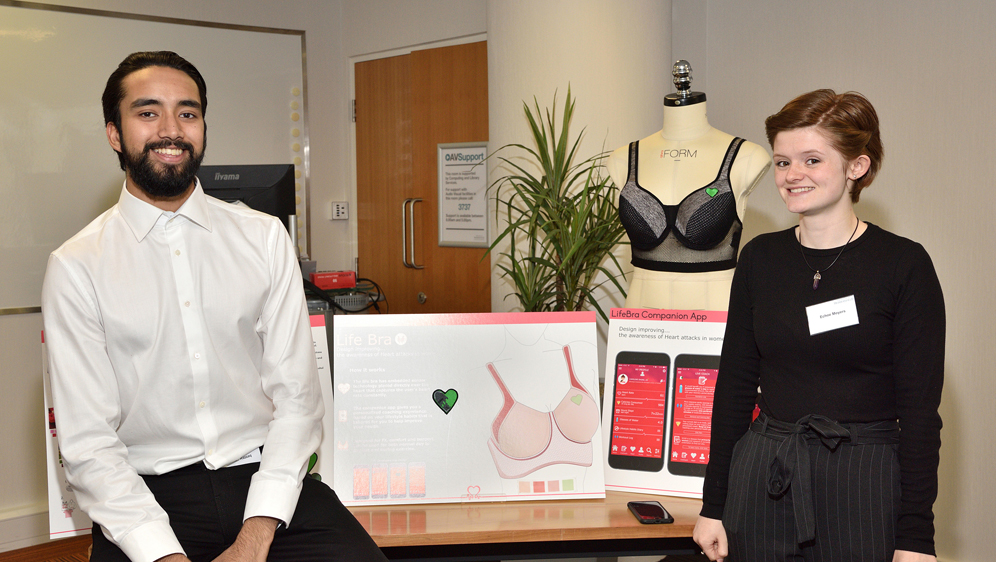
Above - Qamer Razzaq and Echoe Moyeres with their device named Life Bra
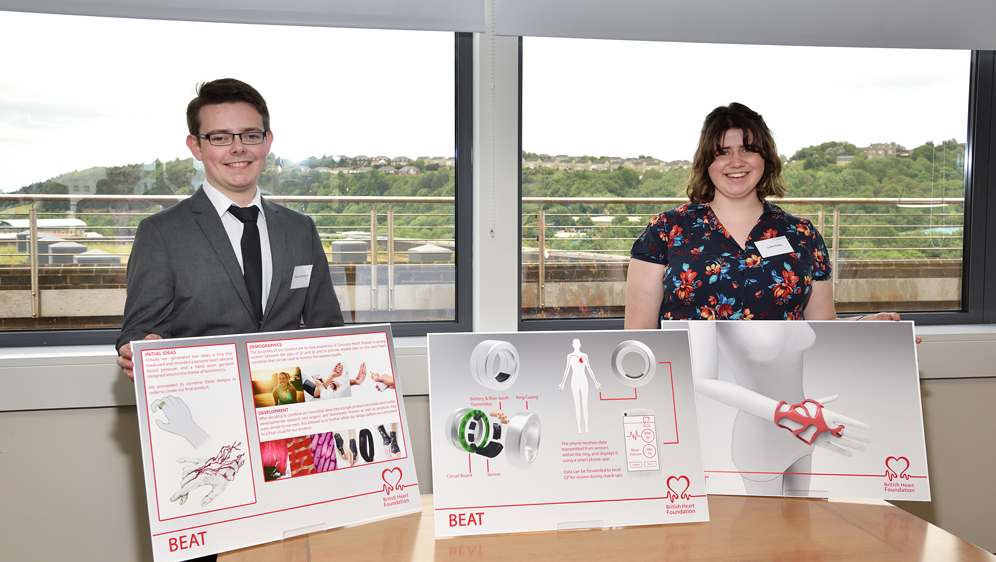
Above - Kyran Joyhnston-Hunt and Lydia Hurley with their device named Beat

Above - James Seal and Ellen Crackness with their device named Blossom







